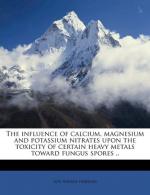|
This section contains 821 words (approx. 3 pages at 300 words per page) |

|
Overview
Potassium nitrate (poe-TAS-ee-yum NYE-trate) is transparent, colorless, or white, and may be crystalline or powdery solid. It is odorless with a sharp, cool, salty taste. It is slightly hygroscopic, that is, having a tendency to absorb moisture from the air. Potassium nitrate, more commonly known as saltpeter or niter, has been used by humans for many centuries. Going back as far as ancient Chinese civilizations, the compound was used as an ingredient in fireworks, to preserve foods, to make incense burn more evenly, to increase the male sex drive, and for magic potions.
How It Is Made
Potassium nitrate is made commercially by reacting potassium chloride (KCl) with nitric acid (HNO3) at high temperatures: 3KCl + 4HNO3 → 3KNO3 + Cl2 + NOCl + 2H2O.
Key Facts
Other Names:
Niter; saltpeter; nitrate of potash
Formula:
KNO3
Elements:
Potassium, nitrogen, oxygen
Compound Type:
Salt (inorganic)
State:
Solid
Molecular Weight:
101.10 g...
|
This section contains 821 words (approx. 3 pages at 300 words per page) |

|


